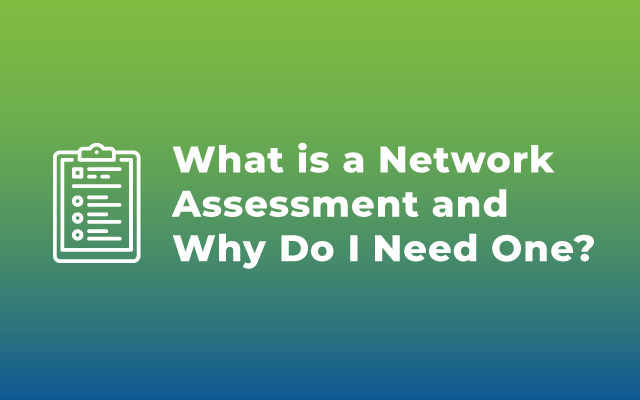Articles /
What is a Network Assessment, and Why Do I Need One?

What is a network assessment?
A network assessment provides a snapshot of the current network. This allows for an examination of network infrastructure, performance, and security. The goal of an assessment is to get an overall view of your network’s current state and to identify improvement opportunities. From a security standpoint, collecting and analyzing comprehensive data about network health provides your Security Operations Center (SOC) team of cybersecurity experts or Managed Security Services Provider with an opportunity to remediate network vulnerabilities before the bad actors can exploit them.
Network assessments help ensure the compliance of sensitive IT infrastructure, including systems that host financial, customer, or health data. A network assessment also allows you to identify bottlenecks and improve resource management. It is a good idea to conduct a network assessment to ensure the network fits the needs of your business or before implementing new technologies, such as designing a new hybrid network footprint that includes cloud computing.
What are the critical components of a network assessment?
- Overall Security Review & Risk Score – A network assessment helps organizations understand where they fall short with information security (infosec) strategy. In addition to identifying data security measures, existing security infrastructure is analyzed, and configuration analysis is performed. A risk score will help you understand your IT security shortcomings.
- Physical Inventory & Asset Summaries – An essential step in optimizing IT resource usage is documenting and inventorying all hardware, software, and physical devices that support an organization’s IT network. This may include infrastructure, performance, availability, management, and security surveying.
- Vulnerability Scan – A vulnerability scan can shed light on vulnerabilities in your network. This effort and preventative measures to reduce risk can prevent exploitation or hacking by informing a cybersecurity checklist to bolster your current IT environment. Each vulnerability in the scan report is delivered with an easy-to-understand threat score to help you prioritize remediating more critical security issues.
- Visibility & Management Audit – When considering the complexity of a modern organization’s IT network, it is essential to maintain a view of the system in its entirety and the ability to manage all network tools.
- User Access & DNS Security – Internal systems with open ports pose a threat magnified by older user accounts that still have access and are not correctly disabled. A network assessment shared permission report details which groups and users have access and permissions to devices and data. DNS inspection and analysis provide insights into the stability and security of the network and help illuminate what malicious actors might see when they begin looking at your environments.
- Performance Analysis & Quantitative Data – Data flows optimally only when the network performs at peak ability. Performance analysis allows your organization to measure bandwidth capabilities, network efficiency, traffic, and end-user behaviors across tools.
What are the benefits of a network assessment?
Many organizations have an opaque view of their networks, lacking proper network documentation that accurately portrays the current infrastructure environment. Without a network assessment, this uneven ground proves detrimental to understanding how to align business goals with an optimized technology stack.
A network assessment allows for future growth by providing scalability, security, and resiliency, enabling you to see what’s going on with your IT infrastructure. This clarity unlocks the ability to create a strategic road map for your IT systems and people, improves security, and uncovers the potential to save on costs. A bonus is the ability to identify protocol enhancement like network segmentation. A network assessment reveals performance, visibility, and security concerns so you can get all stakeholders aligned before improving your organization’s IT posture.
What should you expect from a network assessment?
The network assessment starts with a clear description of the process. The results should be just as transparent, with straightforward strengths and weaknesses. Once a detailed analysis of assessment groups is completed, the recommendations are designed to address problems while considering best practices and budget constraints. The results from the analysis are practical in application for both IT teams and executives. Lastly, you get a list of priorities and actionable items for your IT environment.